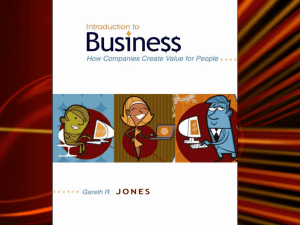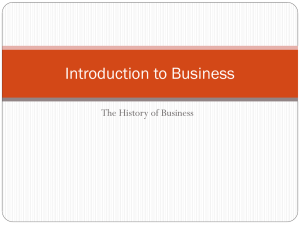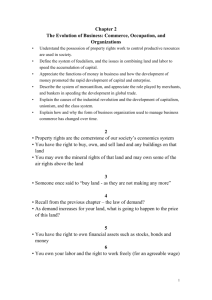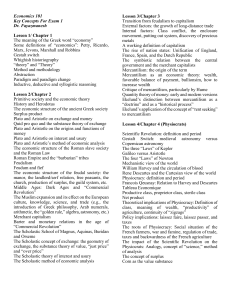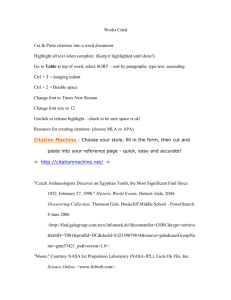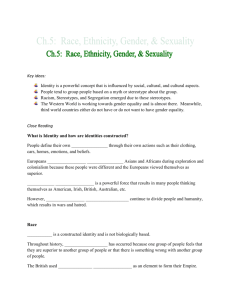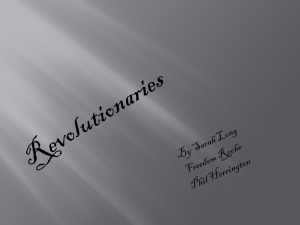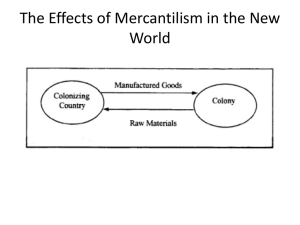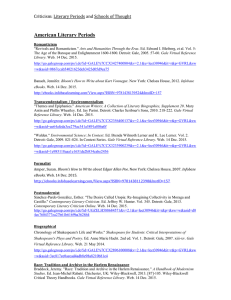Evolution of Business
advertisement
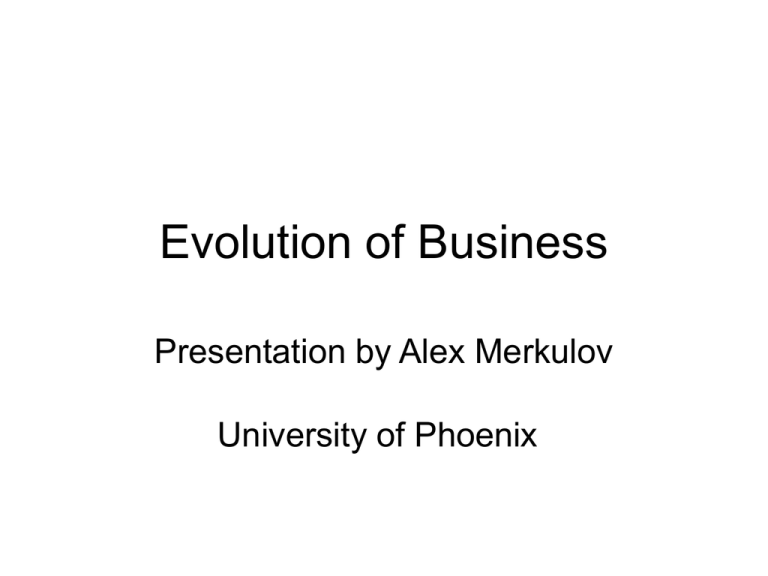
Evolution of Business Presentation by Alex Merkulov University of Phoenix Business Evolution Milestones Steam Engine & Industrial Revolution Feudalism A.D. 500 - 1500 Mercantilism Until 18th Century Pre-capitalism Capitalism From early 19th Century Growth of Property Rights higher lower Time from Feudalism to Mercantilism and to Capitalism Feudalism Overview • Aristocrats control property rights to all valuable resources, including people (Mackenney, 2004). • Church is suspicious of profit • Nobles disdain commerce as unworthy Mercantilism Overview • Double-entry (P&L) accounting invented • Positive balance of trade is encouraged • Merchants and politicians begin to share common economic interests (Castaneda, 2006) Capitalism Overview • Supply and demand freed from major government control • Resources are privately owned by individuals and corporations Commerce • Increased over time with increasing property rights • Facilitates technological innovation • Improves quality of life (Castaneda, 2006) Industrial Revolution • Attributed to invention of Steam Engine, Railroad, etc. • Raised enterprise required to run big industrial business to high levels • Fueled innovation References Mackenney, R. (2004). Industry. In J. Dewald (Ed.)Europe, 1450 to 1789: Encyclopedia of the Early Modern World, 3(pp. 255-262) New York: Charles Scribner's Sons Retrieved March 1, 2009, from Gale Virtual Reference Library via Gale: http://go.galegroup.com/ps/start.do?p=GVRL&u=apollo Castaneda, C. J. (2006). Capitalism. In J. J. McCusker (Ed.)History of World Trade Since 1450, 1(pp. 103-108) Detroit: Macmillan Reference USA Retrieved March 1, 2009, from Gale Virtual Reference Library via Gale: http://go.galegroup.com/ps/start.do?p=GVRL&u=apollo
